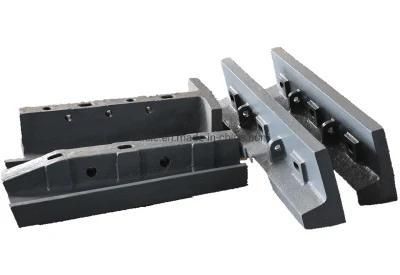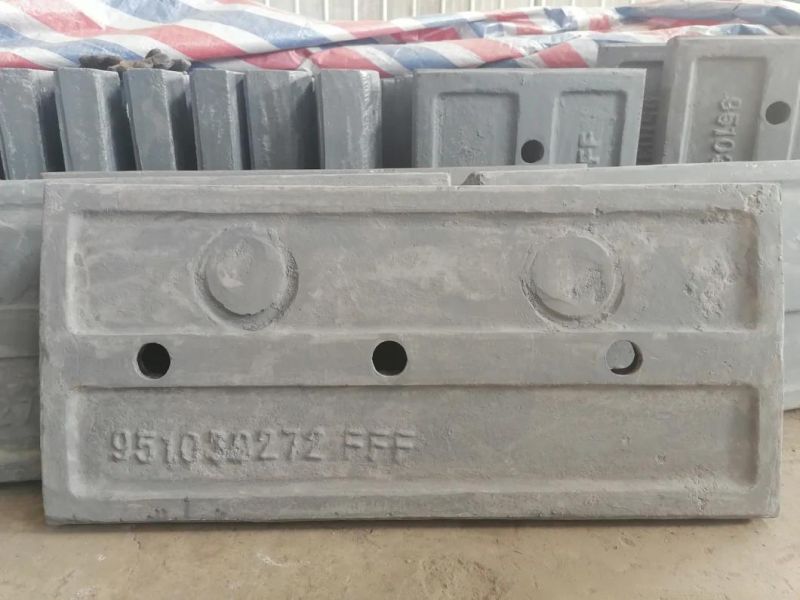
Wear-Resistant Mill Liner for Ball Mill
CITICIC Luoyang Heavy Machinery Co., Ltd.- Casting Method:Sand Casting
- Casting Form Material:Sand
- Casting Metal:Tailored Design
- Casting Form Usage Count:Semi-permanent
- Surface Treatment:Sand Blast
- Coating:According to Customers′ Requirement
Base Info
- Machining Tolerance:Other
- Standard:ASTM
- Certification:ISO 9001:2008
- Various Material and High Performance:More Than 30-Year Experience
- Transport Package:Suitable for Long Distance and Sea Transportation
- Trademark:CIC
- Origin:China
Description
HMCB04 Chromium-molybdenum Steel
Common Chromium-molybdenum Steel
Hardness
HB 350-400
HB350-375
Impact Value
≥80J
≥45J
Tensile Strength
≥1300J
≥1200J
Competitive Advantages:
Self-improved property
Competitive Advantages:
Self-improved property
Of longer service life
Of higher hardness
Of better property of impact value and tensile strength
Of higher hardenability
Widely used and commonly accepted
OEM and ODM are available.

With several decades of development, CIC has become the Manufacturing Base of Liner of Semi-autogenous mills.
1. Optimizing Manufacturing Process, Guarantee Liner Quality
Our high quality liners manufactured by advanced process have covered a wide marketing of semi-autogenous mills.
2. Optimizing Liner Design, Eliminating Break of Liner A main working function of the liner is to lift the milling ball to a reasonable height, then fall along right rack and smash against the material enrichment area at the bottom of the mill in order to crush the material effectively. So it is greatly important of reasonable optimizing the liner design and correct guiding the milling ball running track in order that guarantee the optimized operation condition in the mill and effectively protect the shell liner of semi-autogenous mill, meanwhile, can eliminate liner break, prolong the service life and decrease effectively unit wear of liners and milling ball, and improve the hour production per machine.
3. Focusing on Detailed Operating Condition, Improving Users' Benefits Optimizing the liner design based on the wear forms of liners in different operating conditions maximally decrease the crashing function of the liners, and effectively decrease the weight of scrap liners. Improving the shape of liners can effectively improve the relative motion state between milling balls and liners, then decrease liner wear by material and milling balls and prolong the liner service life while reducing the users' production cost.
